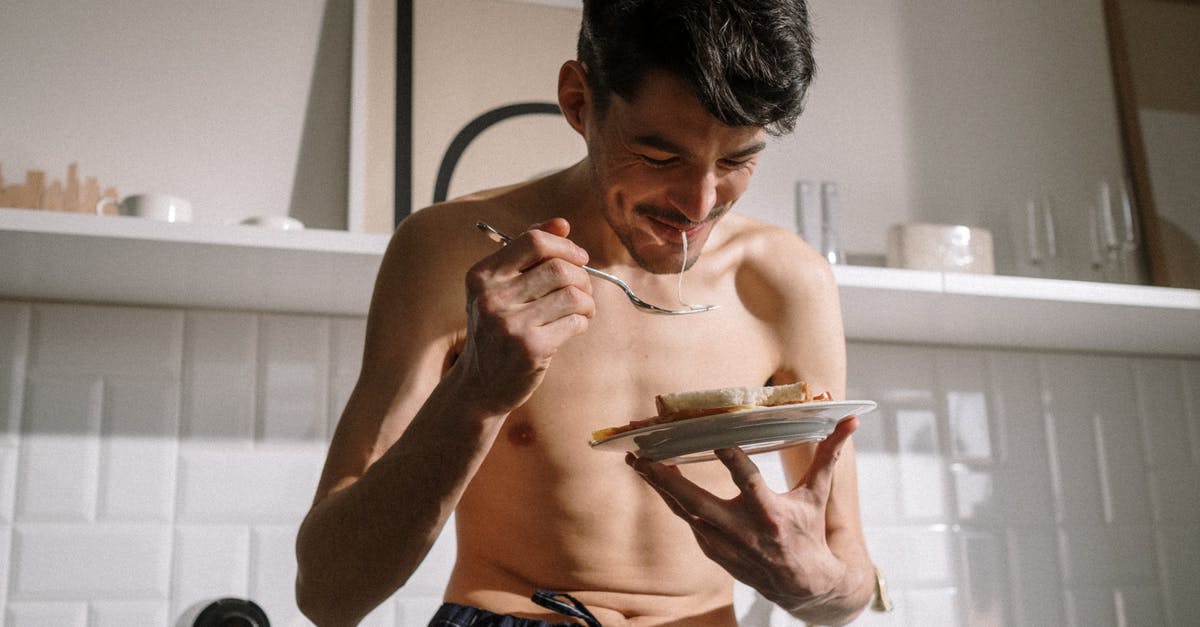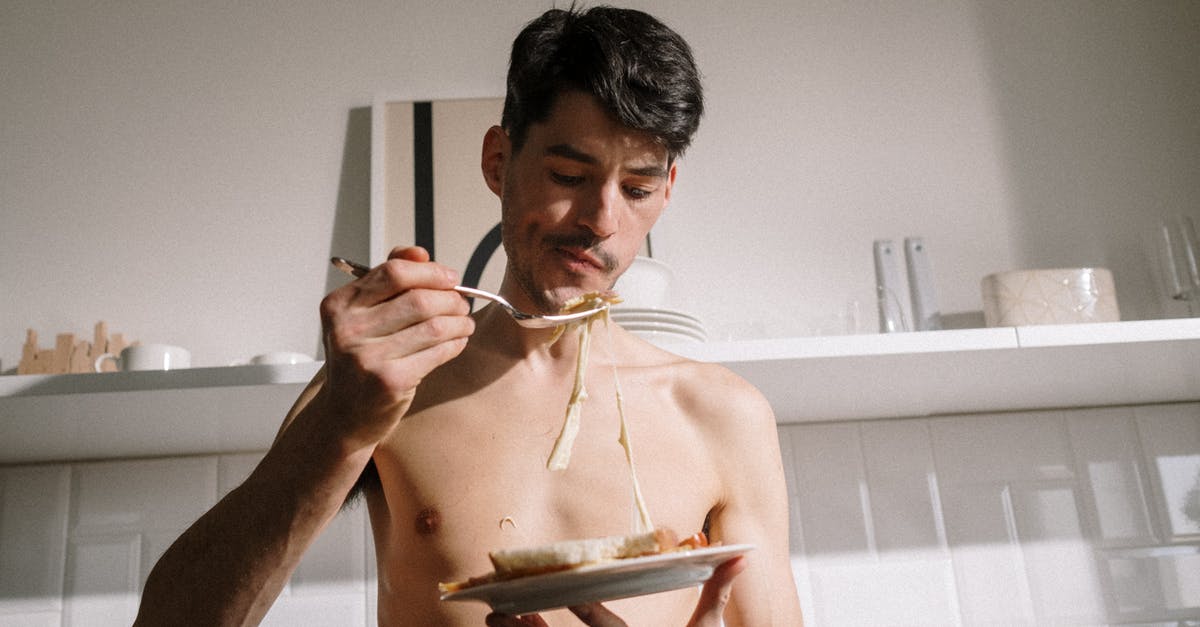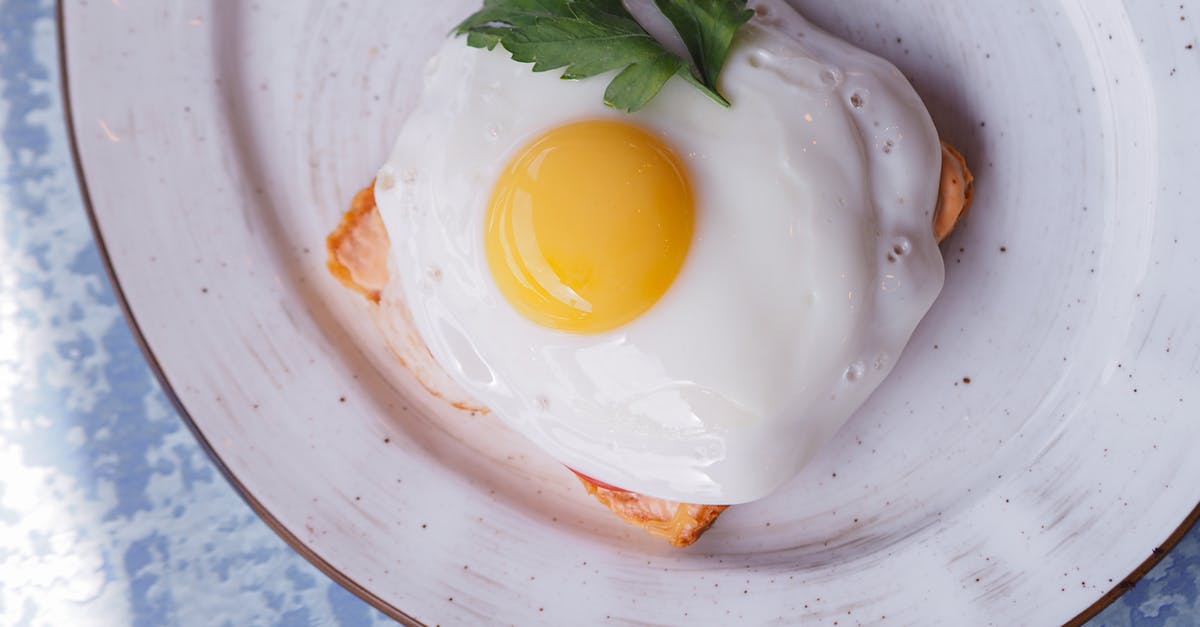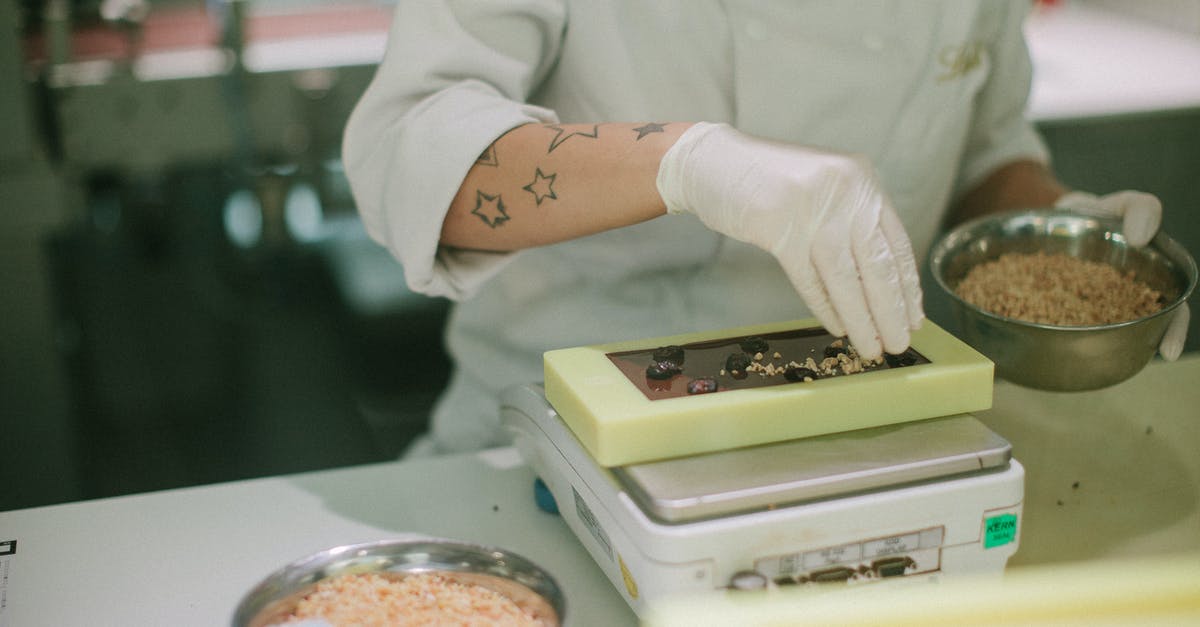How to succeed with making omelette

Sounds simple but I seem to fail every time, that is it turns into scrambled eggs instead. How do you make it so that you can flip it over both without it breaking and before it burns?
Best Answer
This depends on which type of omelet you want to make, I'll run through the three types I know how to make.
The thick Waffle House style omelet (it's the kind that poofs up and is about an inch thick all the way around, IHOP also serves this omelet) is achieved by beating the eggs and incorporating a LOT of air in to the mixture. Restaurants do this by using a milkshake machine to whip the eggs. This type of omelet is easy to flip and cook, you just put enough butter to coat the pan, pour off any excess and then pour your egg mixture in to the pan (you are going to have to use an omelet pan for this). Let the omelet cook while occasionally swirling the pan in a circular motion. When the omelet has cooked most of the way through flip by either the toss in the air and catch in the pan method (not for beginners!) or the fork and spatula method (place spatula underneath and hold omelet onto the spatula with a fork on one corner). This will yield a thick fluffy omelet but it can be hard to work enough air into the eggs at home.
The second type is the French omelet and it doesn't require flipping at all. The french omelet is what you see in fine dining brunches if you see it at all in the U.S. This omelette is made by mixing your eggs and pouring the mixture into a medium low heat pan. As it cooks you take a fork and pull the cooked egg off the bottom and into the center of the omelet. Here is a video that goes more in depth.
The third type is what I call the grandma omelet. It's made in a frying pan instead of an omelet pan and features a fairly flat egg wrapped around some cheese and other toppings. For this omelet you need medium heat. You should coat the pan with butter and pour in the egg mixture to a heated pan. Let cook for a minute or two, then swirl the uncooked egg to the outside of the pan use a fork to lift the very edge to allow the uncooked egg to take the place of the cooked next to the pan. Let the egg cook till desired doneness (side note: your omelet should and will have a small amount of uncooked but heated egg, it should be not runny, but still not be entirely set) and add toppings and fold over. Then serve.
To address your scrambled egg problem, you need to let the egg set more before attempting the flip and lowering the heat on your pan will take care of the burning. Just remember that eggs are extremely delicate and respond better to lower heat and close attention.
Also the names are just the ones I use in my head, if somebody knows the correct terminology, let me know and I'll update to reflect it.
Pictures about "How to succeed with making omelette"



What is the trick to making an omelette?
When cooking the omelette, heat a non-stick pan over medium to high heat with a little more butter until it foams. Add the eggs. Leave the pan alone for a few moments, just until the edges of the omelette set. Using a rubber spatula, stir the eggs gently in a circular motion until slightly thickened.What are the 7 steps to making omelets?
7 tips to make a great omeletHow do I stop messing up my omelette?
For a two-to-three-egg omelet, use an 8-inch pan. And make sure it's nonstick, unless you're a masochist." "A pan that's too hot will result in an overcooked, browned bottom and an undercooked, runny top. I like to heat butter over medium until it's finished foaming, then pour in the eggs."What is the secret to a well cooked omelet?
Beat the eggs: Soak 3 large eggs for 5 minutes in hot-not scalding-tap water. This will ensure that the omelet cooks faster, and the faster an omelet cooks, the more tender it's going to be. Crack the eggs into a small bowl or large bowl-shaped coffee mug. Season with a pinch of fine salt.4 Levels of Omelets: Amateur to Food Scientist | Epicurious
More answers regarding how to succeed with making omelette
Answer 2
One thing I haven't seen mentioned yet that I find makes all the difference is this: I put the eggs in a bowl of warm water for 5 mins or so before I crack and blend them. Cold eggs tend to get rubbery when they hit the hot pan.
I also use clarified butter (ghee), and I ALWAYS keep a LOW heat. After gently pouring the eggs in, I let it just sit for a minute or three, until it's clear that the bottom has set. Then, using a rubber spatula, I gently lift and loosen the omelette all the way around, and shift the uncooked egg part so it flows underneath. Once the top is almost dry, I put in my ingredients across one half, and then quickly lift and flip the other half over it, making a half-moon shape. The insides will continue to cook while I gently flip it over to one side and the other, finishing the outside to a very light golden.
That's my technique, anyway. :)
Answer 3
I usually make open omelette which can be a bit trickier but my technique always works perfectly so maybe it would help you as well.
First I melt around 1 teaspoon butter and I spread the beaten eggs in the pan with a spoon. I put the lid on and let it cook over very low heat until it's almost cooked all over (around 5 minutes). To flip, I let it slide to the lid and flip it over the frying pan. If you want it folded, the low heat and the fat will allow you to have a better control of the the doneness and you won't fail.
Answer 4
The technique I used to use was to lift up the edges and tilt the pan very slightly, to move the uncooked egg out to the sides. This worked pretty well in the sense that it didn't break or burn, but didn't produce that perfectly smooth omelet.
The technique I use today is to simply use the bottom of a fork and make circular motions across the surface to spread around the uncooked egg. I do this on lower heat and, obviously, with lots of fat (butter or bacon fat if I'm making bacon at the same time). When the top "layer" of egg starts to set, it's time to add the other ingredients, briefly melt the cheese / warm the vegetables / etc., and fold.
To fold it, simply tilt the pan so that the egg starts to slide off the side; then use a fork or spatula to lift the end and fold it back over the other side. Works for me every time.
Answer 5
To prevent burning while maintaining a high heat, use clarified butter. You get a higher smoke point, because the milk solids are no longer there.
Answer 6
I'm pretty happy with the way I make my omelets so here is the way I do it. I usually make very small omelets and they cook for no more than 45-60 second on a very hot plate. I use either one or two eggs. The result is a pretty wet and "runny" omelet, but I think they taste delicious.
- take one or two ROOM temperature eggs (not directly from fridge) and wipe them well together. I only add salt, pepper and a pinch of water.
- cut the vegs you want in your omelet. I prefer garlic, onion, red pepper and mushrooms. Since its a small omelet, cut them very well and use small amounts.
- heat a little oil in a very hot pan for some secs
- add garlic and onion in the oil and cook for some secs, add red pepper, mushroom etc. for some secs
- then add eggs and use the trick of lifting the omelet so that everything gets cooked
- i usually have the plate so hot that it takes no more than 45 secs to make the omelet, after that amount, I add some cheese, flip it over and take it off the plate
This makes a great omelet and usually it's a bit runny and wet just like I prefer it :)
Answer 7
Like Kyra said, I use butter (somewhat liberal amounts) in a Teflon pan before pouring the egg. Make sure the pan is to temperature before pouring the eggs in. It helps if the eggs are at room temperature. The eggs should bubble fairly soon after pouring, 10-15 seconds. That helps to make sure the omelette is cooked without burning.
The right size pan is important. Use a large enough pan so that you don't have too thick of a mass to cook through.
As far as flipping, if you're not good with flipping it in the pan there is no shame in using a spatula :) Something flexible with a little give at the tip I have found helps to get underneath the omelette without breaking it up too much. Be sure that you get under it enough or else it will break.
Answer 8
Lots of butter (actually, I use Smart Balance, wife=nurse, what can I say), medium heat, very think coating of egg. I make my eggs simply as 1 egg + 1 tbl.spoon water, whisk. Teflon rounded edge pan. No flipping over, just flip up the sides over the center to cover chesse, ham, etc. added on top when just starting to dry out.
Answer 9
A French-style no-flip omelette can also be made without needing to pull the egg toward the center with a fork.
For many years, the top hit for "omelette" on Google was Pineapple Girl's omelette recipe, which is quite easy to make, and has a special addition over the traditional French omelette: a delicious, crispy filigree of egg around the border. The original site is now down (and has consequently disappeared completely from Google search results), but the internet archive still has a copy of what was the world's most popular omelette recipe.
While I hope the internet archive of this omelette recipe will always remain available, I'll also give my own set of (overly wordy) instructions on how to make this type of extra-delicious omelette:
You'll need eggs, whatever toppings and spices you want for the omelettes, at least one 10-inch non-stick skillet, or ideally one per person (that is, ideally two), so you can sit down to eat with your guest(s) without anyone having to eat an omelette that's not piping hot from the skillet.
Begin by setting out three eggs per omelette to warm up to room temperature, and then prepare whatever filling you want for your omelettes...this can be anything.
Personally, I've found one set of toppings I like and tend to stick with it: diced ham (or diced ham steak, if a whole ham is too much to buy at once), grated cheese, a few sautéed mushrooms, some wilted spinach, and a lightly cooked diced roma tomato (the latter usually cooked together with the spinach, but separately from the mushrooms).
If your toppings don't require pre-cooking, and you're reasonably quick at chopping/shredding them, you can wait until after getting the omelettes are started to prepare them, but I find it a bit nerve-racking myself, and prefer to have everything ready in advance.
If you used your skillet to prepare any of the toppings, you'll probably need to wash it again before using it to cook the omelette, or it may still end up sticking. If it's in perfect condition, it may not be necessary.
Scramble the eggs, together with any spices, i.e. a dash to an eighth of a teaspoon salt, optionally pepper, perhaps a hint of hot spice via a spiced salt such as Tony Chachere's (which makes much it easier to add just a hint of hot spice than trying to pinch an optimum dusting). Optionally, add about two tablespoons of milk to the egg, for a softer texture (personally, I like this recipe about equally with or without milk, try it both ways).
Spray the skillet with oil, heat the skillet somewhat, and add the egg. Swirl the egg in the skillet so it leaves a thin layer all around the skillet, the layer should extend about 3/4 of an inch above the egg in your skillet.
Now wait until the egg has mostly firmed up, but still has a thin layer of runny egg all across the top. Swirl the skillet a second time to re-coat the same 3/4 of an inch above the omelette. This time, the layer will be noticeably thicker (although still quite thin).
At this point, you can begin adding toppings on half of the omelette, to let them warm up a little. If the omelette isn't cooking evenly, add them to the runnier side, since the side you add them to will stay in the pan longer.
As the omelette continues to firm up, the thin layer of egg will become crispy and brown, and pull back on its own from the side of the skillet (this is why a non-stick skillet is a necessity for making this type of omelette). When this happens, add any remaining toppings, and fold the more cooked half of the omelette over the less-cooked half, enclosing your toppings. Be careful not to break off the lacy border.
Give it a moment more for the cheese to melt and (if the lower half was still overly runny) for the egg to firm up a little more on the bottom, then serve (carefully, don't break off that lacy border) and enjoy!
Answer 10
The deal with omelettes is practice and more practice. And you need to use more heat than you can probably imagine. The pros saute at much higher temps than most home kitchens are able to deal with. I will cook some restaurant style dishes at home including omelettes. My trick is to have all of my mis en place in order and ready for the intense and fast pace of cooking an omelette. My favorite technique is to finish the omelette in a 425F oven just after flipping it. You need the oven hot for roasted potatoes anyway right. At home I whip two eggs with a tsp of heavy cream and a pinch of kosher salt in a copper bowl. I use a heavy Lincoln professional 8" non-stick skillet with its plain metal oven proof handle and the pan has never seen a dishwasher or tool other than a wooden spoon or chopsticks. A great pan will allow you to use much less fat. Burner on high but only let the pan partially preheat or the fat and non-stick surface will burn. Pour in about 1/2 tsp of olive oil and a tsp of butter (olive oil helps keep butter from burning). Pour in the whipped eggs immediately into the sizzling fat. I then use a wooden spoon to work (French Fold) under the omelette to allow the raw egg to slide under the cooked. This happens fast. About a minute.
Flip the omelette free style. Top with a little shredded Tillamook or Beechers aged cheddar and then put the pan in the oven for about a minute--it will fluff up and melt the cheese. Pull the pan out of the oven and add fillings like some sauteed mushrooms and fresh herbs, fold over onto the serving plate by letting the omelette slide half moon onto the plate and then using the pan like a hinge fold the other half moon over releasing the omelette onto the plate with the rounded part of the omelette matching up the round edge of the plate. Pairs well with Irish Coffee.
Answer 11
Lots of butter to grease the pan. :D
Sources: Stack Exchange - This article follows the attribution requirements of Stack Exchange and is licensed under CC BY-SA 3.0.
Images: Ron Lach, Ron Lach, Yan Krukov, ANTONI SHKRABA
